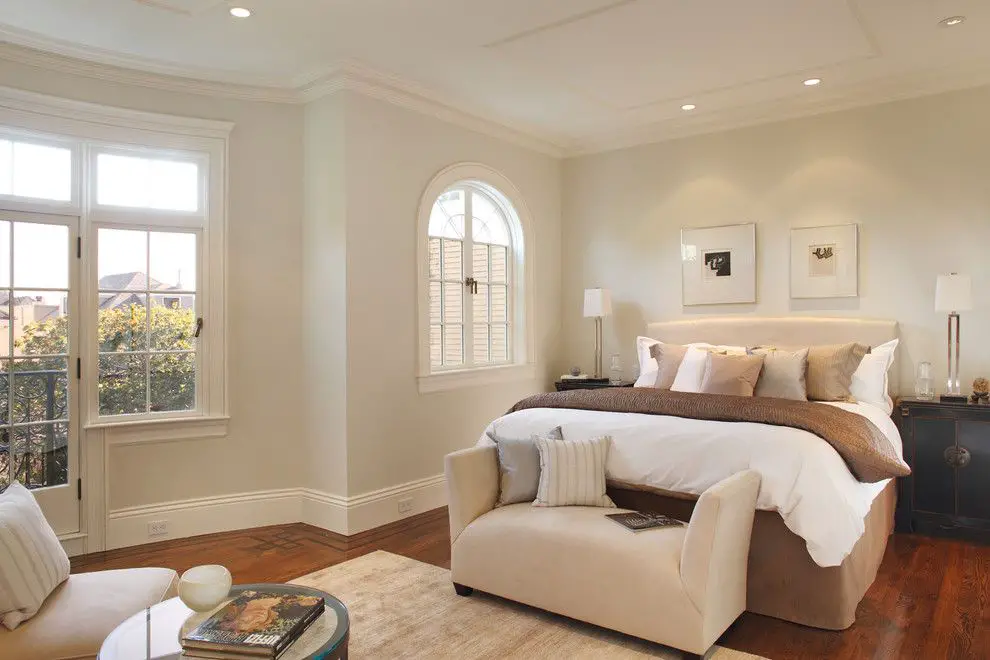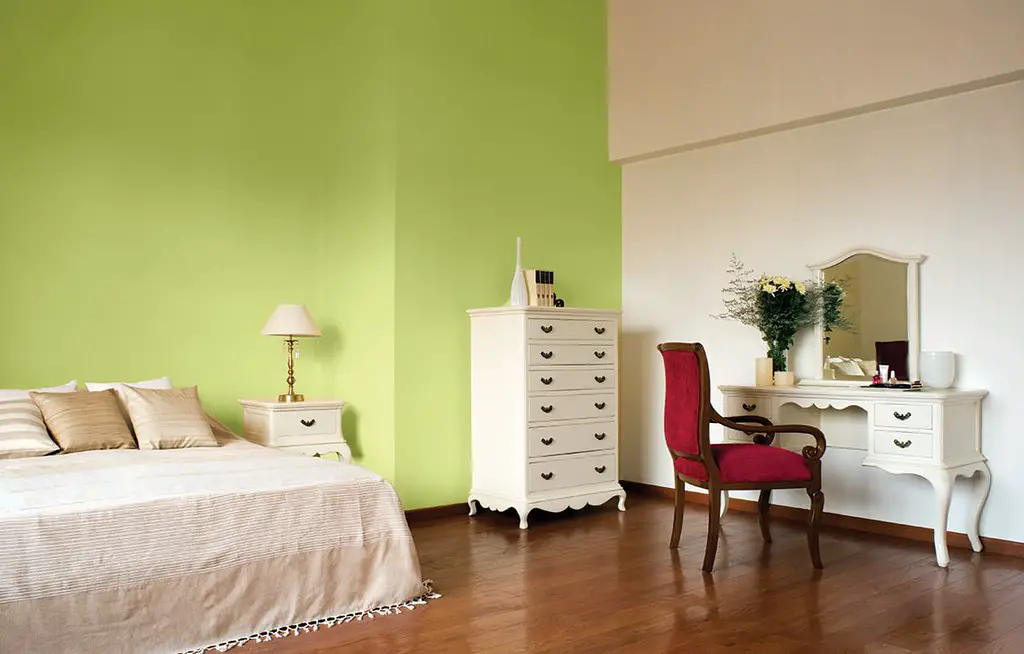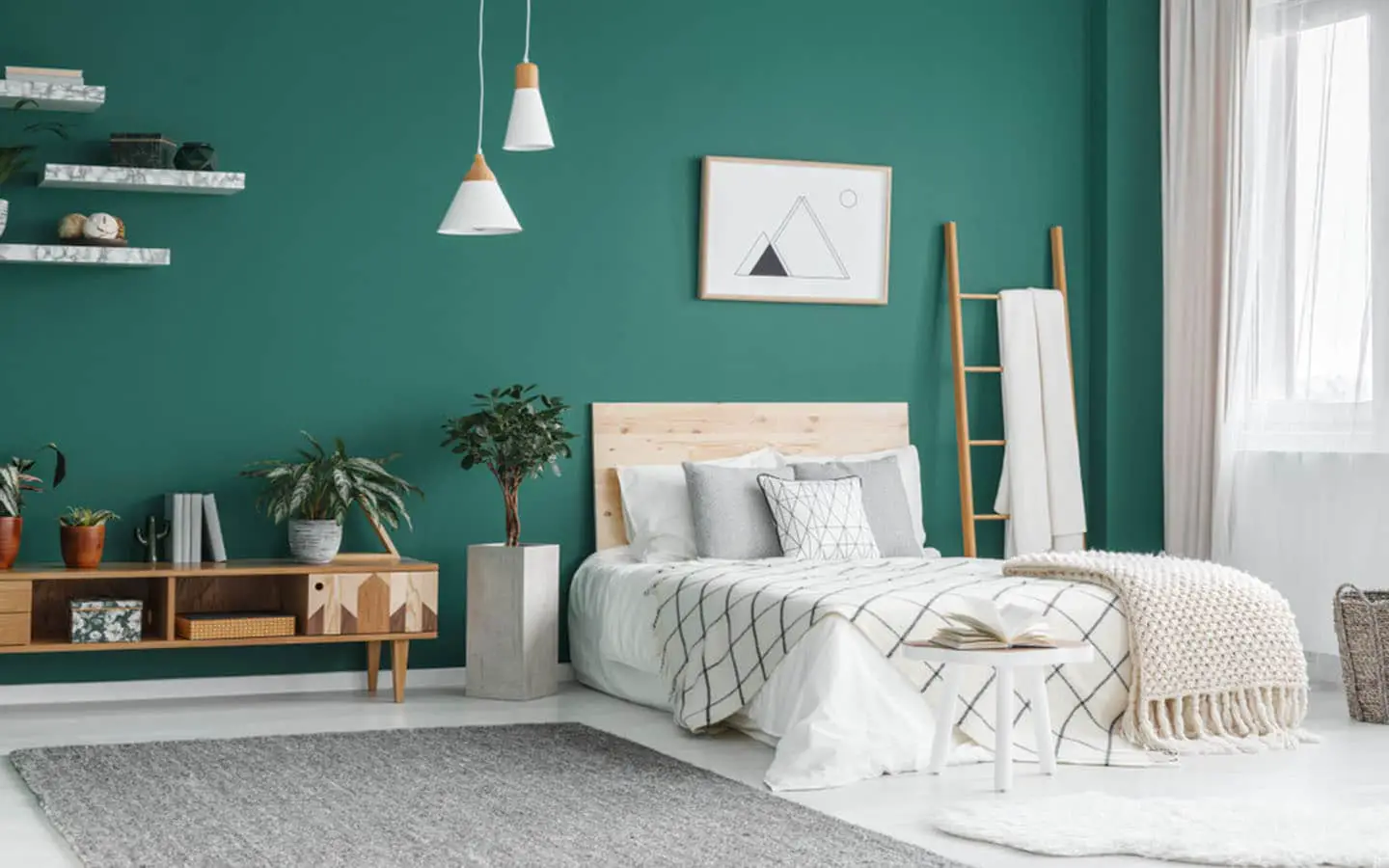What Is The Best LRV For Interior Paint
Introduction
What Is The Best LRV For Interior Paint: When it comes to transforming your living spaces, the choice of paint color goes beyond aesthetics, delving into the realm of light and ambiance. The Best LRV for interior paint is not just a numerical value, but a crucial factor that can significantly impact the mood, perception, and functionality of a room.
LRV quantifies how much light a paint color reflects or absorbs, ranging from 0 (absolute black) to 100 (pure white). Understanding LRV empowers you to make informed decisions about paint shades that suit your vision, lighting conditions, and desired atmosphere.
In this comprehensive guide, we will navigate the complexities of LRV, demystifying its role in interior design. We’ll delve into the interplay between LRV and different spaces, considering both natural and artificial lighting sources. Uncover the secrets of enhancing spaciousness with high LRV hues and creating coziness with lower LRV choices.
Moreover, we’ll discuss the harmonious coordination of LRV values between interior walls, ceilings, and accents to achieve a balanced and cohesive aesthetic. Whether you seek to invigorate a vibrant living area or cultivate tranquility in a serene bedroom, the optimal LRV can be your trusted ally.
Join us on this journey as we unlock the nuances of LRV and empower you to curate interiors that not only reflect your personal style but also harness the transformative power of light. Your quest for the best LRV for interior paint begins here.

What is the best LRV to brighten a room?
The scale is from 0-100 with 0 being dark and 100 being bright. She recommends colors with an LRV of above 65.
To brighten a room and create a sense of openness, it’s generally recommended to choose paint colors with a higher Light Reflectance Value (LRV). LRV measures how much light a color reflects, and colors with higher LRVs are lighter and tend to make spaces feel more luminous. LRV values range from 0 (absolute black) to 100 (pure white).
Colors with LRVs above 50 are considered light, while those with LRVs above 70 are particularly effective at brightening a room. Here are a few examples of paint colors with high LRVs that can help brighten a space:
Light Neutral Whites: Colors like “Decorator’s White” (LRV 85), “Simply White” (LRV 91), or “Chantilly Lace” (LRV 92) from Benjamin Moore are popular choices. These whites have high LRVs and can reflect a lot of light, making a room feel spacious and airy.
Soft Pastels: Light pastel shades like pale yellows, soft pinks, and gentle blues can also contribute to a brighter ambiance. Examples include “Pale Oak” (LRV 69) and “Pale Powder” (LRV 68).
Light Grays: Light gray shades can provide a modern and airy feel. Look for colors like “Classic Gray” (LRV 74) and “Revere Pewter” (LRV 55).
Soft Beiges: Light beige or greige (gray-beige) tones, such as “Balboa Mist” (LRV 67) or “Edgecomb Gray” (LRV 63), can add warmth while still brightening the room.
Cool Whites: Whites with cool undertones, like “Extra White” (LRV 86) from Sherwin-Williams, can create a clean and bright appearance.
Is higher LRV better?
A color with a higher LRV might create a light and airy vibe, while a color with a lower LRV will align better with a dark, moody feel. It’s important to remember that choosing a higher LRV paint color doesn’t necessarily mean it will appear lighter if you don’t have enough natural or artificial light in a room.
Whether a higher Light Reflectance Value (LRV) is better depends on the specific goals you have for your space and the ambiance you want to create. Higher LRV values indicate lighter colors that reflect more light, while lower LRV values represent darker colors that absorb more light. Here’s how to consider LRV:
Advantages of Higher LRV:
Brightness: Higher LRV colors can make a room feel brighter and more open. They reflect more natural and artificial light, creating a well-lit and inviting atmosphere.
Perceived Space: Lighter colors can visually expand a room, making it appear larger and more spacious. This can be particularly beneficial for small rooms or spaces with limited natural light.
Versatility: Lighter colors tend to be more neutral and versatile, making it easier to coordinate with various décor and furnishings.
Clean Aesthetic: Lighter colors can convey a sense of cleanliness and freshness, giving a room a polished look.
Considerations for Lower LRV:
Warmth and Coziness: Lower LRV colors can create a more intimate and cozy atmosphere. They absorb light and can make larger spaces feel cozier.
Depth and Drama: Darker colors can add depth and drama to a room. They can be particularly effective in accent walls or areas where you want to create a focal point.
Sophistication: Deep, rich colors can add a touch of sophistication and elegance to a space.
What is the standard LRV value?
The standards recommend an LRV contrast of at least 30 points, with 20 points being acceptable if the illuminance on the surfaces is 200 lux or more. If door opening furniture projects beyond the face of the door or creates an enhanced differentiation in shade, the LRV contrast must be a minimum of 15 points.\
The standard Light Reflectance Value (LRV) for paint colors varies, and there isn’t a single specific value that qualifies as “standard.” LRV is a measurement that indicates how much light a color reflects, ranging from 0 (absolute black) to 100 (pure white). Different paint colors, shades, and manufacturers will have a range of LRV values based on their pigmentation and formulation.
However, if you’re looking for a general guideline, here’s a rough breakdown of LRV ranges and what they typically represent:
0-20: Very dark colors. These colors absorb a significant amount of light and can create a cozy, intimate atmosphere. They are often used as accent colors.
20-40: Dark to medium colors. These colors still absorb more light than they reflect but are not as intense as the very dark colors.
40-60: Medium to light colors. This range includes a variety of neutral shades and is commonly used for wall colors. These colors offer a balance between brightness and warmth.
60-80: Light to very light colors. These colors reflect a lot of light and are often chosen to create an open, airy, and spacious feeling. They are commonly used in areas where brightness is desired.
80-100: Very light to pure white colors. These colors reflect almost all the light that hits them and can create a clean and fresh aesthetic.
What LRV paint should I use?
For general painting, decorators suggest using a paint that has an LRV of 50% or higher, which means the color reflects more light than it will absorb. If you have a darker room, however, you’ll want to find colors that have an LRV of 60% or more.
1. Consider Lighting Conditions:
If the room has ample natural light, you might opt for a slightly lower LRV to create a cozy and inviting atmosphere.
For rooms with limited natural light, higher LRV paints can help brighten the space.
2. Desired Mood:
Higher LRV paints (above 60) are often used to create an open and airy feeling. They’re ideal for spaces you want to feel larger, brighter, and more expansive.
Lower LRV paints (below 50) can add warmth and coziness, making rooms feel more intimate.
3. Room Size:
For small rooms, lighter colors with higher LRV can make the space feel larger and more open.
In larger rooms, you have more flexibility to choose colors with various LRV values based on the mood you want to achieve.
4. Functionality:
Consider the room’s purpose. For relaxing spaces like bedrooms, lower LRV paints might promote a serene atmosphere. For active areas like kitchens, higher LRV paints can energize the space.
5. Color Coordination:
Think about how the LRV of your chosen paint color complements other elements in the room, such as furniture, décor, and trim.
6. Testing:
Always test paint samples on the walls you intend to paint. Paint can look different under various lighting conditions, so observing how the color behaves throughout the day is crucial.
7. Personal Preference:
Ultimately, the LRV you choose depends on your personal style and what feels right for your space.
Does LRV make a room look bigger?
Space-expanding whites, like Loft White (LRV 92), pale blues, like Echo (LRV 77), and cool greys, like Flint (LRV 66), do the job of reflecting light back into the room exceptionally well and create a sense of increased space.
Yes, Light Reflectance Value (LRV) can influence how spacious a room appears. Paint colors with higher LRVs, particularly those above 60, have a tendency to make a room look bigger and more open. This is due to the way light interacts with these colors and how they reflect light.
Here’s why higher LRV paint colors can create a sense of spaciousness:
Light Reflection: Lighter colors reflect more light, which can make walls appear to recede. This makes the boundaries of the room feel less defined, giving a sense of expansiveness.
Brightness: Higher LRV colors contribute to a brighter overall ambiance. A well-lit space tends to feel more open and welcoming.
Visual Depth: Lighter colors have a way of visually “pushing” the walls away, making the room seem larger than it actually is.
Airiness: Lighter colors evoke a sense of airiness and freshness, which can contribute to the perception of a larger space.
Optical Illusion: Lighter colors create less contrast between the walls and the room’s edges, reducing the emphasis on corners and making them less noticeable.
It’s important to note that while higher LRV colors can make a room appear bigger, they might not always be suitable for every space. Consider the room’s purpose, lighting conditions, and your personal preferences. Also, remember that factors like furnishings, decor, and natural light also influence the perceived size of a room.
Is 48 LRV too dark?
LRVs of 0-35 are considered medium dark to dark. These might be appropriate for a media room or a recuperative retreat for grandma and her migraine. Medium LRVs of 35-55 might be a bit heavy in a room without much natural light but perfect in a sunny location.
For dark rooms with limited natural light, choosing paint colors with a higher Light Reflectance Value (LRV) can help brighten the space and create a more welcoming atmosphere. Generally, paint colors with LRV values above 50 are recommended for dark rooms. Here’s why higher LRV values are beneficial:
Reflecting Light: Paint colors with higher LRV reflect more light, which can counteract the darkness in the room and make it feel less dim.
Brightness: Lighter colors with higher LRV values can make the space appear brighter and more open, even in the absence of abundant natural light.
Expansiveness: Lighter colors can visually expand the room, making it feel larger and less confined.
Lifted Mood: Brighter colors can uplift the overall mood of the space, contributing to a more positive and inviting environment.
Versatility: Lighter colors tend to be more neutral and versatile, making them easier to coordinate with furnishings and décor.
When selecting paint colors for dark rooms, consider options with LRV values above 50 but also pay attention to the undertones. Cool-toned colors like soft blues, pale grays, and light greens can work well to create a fresh and airy feeling. Warm-toned neutrals like light beiges and soft yellows can add warmth and comfort.
Remember that LRV is just one aspect to consider. Always test paint samples on the walls of your specific room, and observe how they look in different lighting conditions throughout the day. This will help you determine the best color and LRV for your dark room.
How important is LRV in paint?
Knowing a color’s LRV is helpful when coordinating colors or creating a mood. (It also helps businesses, schools, and homes stay energy efficient – choosing a color with a larger LRV probably won’t require as much lighting or air conditioning as a color that soaks up light and warms easily.)
Light Reflectance Value (LRV) is an important consideration in paint selection, especially when it comes to interior design and creating the desired atmosphere in a space. LRV measures how much light a color reflects and plays a role in how colors appear under different lighting conditions. Here’s why LRV is important in paint:
1. Light and Brightness: LRV directly influences how bright a paint color makes a room feel. Higher LRV values reflect more light, making a space appear brighter and more open. Lower LRV values absorb more light, creating a cozier and more intimate ambiance.
2. Mood and Atmosphere: LRV can significantly impact the mood of a room. Lighter colors with higher LRV values tend to feel more airy and cheerful, while darker colors with lower LRV values can evoke a sense of warmth, comfort, or even drama.
3. Perception of Space: LRV affects how spacious a room appears. Lighter colors with higher LRV values can make a room feel larger, while darker colors with lower LRV values can create a more intimate setting.
4. Coordination: LRV helps ensure that the colors you choose work harmoniously together. It’s particularly important when coordinating wall colors with furniture, décor, and architectural elements.
5. Lighting Impact: The type and quality of lighting in a space can alter how colors appear. Considering LRV can help you choose colors that look consistent and pleasing under various lighting conditions.

Conclusion
In the quest to create a harmonious and inviting interior space, understanding the concept of Light Reflectance Value (LRV) and its impact on interior paint selection is paramount. As you conclude your exploration into finding the best LRV for interior paint, you have uncovered a key factor that significantly influences the mood, ambiance, and overall aesthetics of your living environment.
The optimal LRV for interior paint color is a delicate balance that takes into account both personal preferences and practical considerations. While a higher LRV can make a room feel more open and spacious, a lower LRV can lend a cozy, intimate atmosphere. The choice ultimately depends on factors such as the size of the room, the amount of natural light it receives, and the intended function of the space.
By grasping the significance of LRV, you’ve gained the ability to transform rooms into vibrant, dynamic expressions of your design sensibilities. Your careful consideration of LRV values has equipped you to orchestrate a symphony of colors that resonate harmoniously with your vision. Each shade selected contributes to a larger narrative, influencing the way you feel within the space and how it welcomes guests.
As you embark on your journey to infuse life into walls, remember that LRV is a tool that empowers you to sculpt the ambiance you desire. It’s a versatile guide that transcends trends and fads, allowing you to curate timeless interiors that speak to your individuality. So, whether you choose lighter hues to bounce off sunlight or darker tones for a cocooning effect, your understanding of LRV will continue to be an asset, nurturing spaces that are as functional as they are aesthetically captivating.








